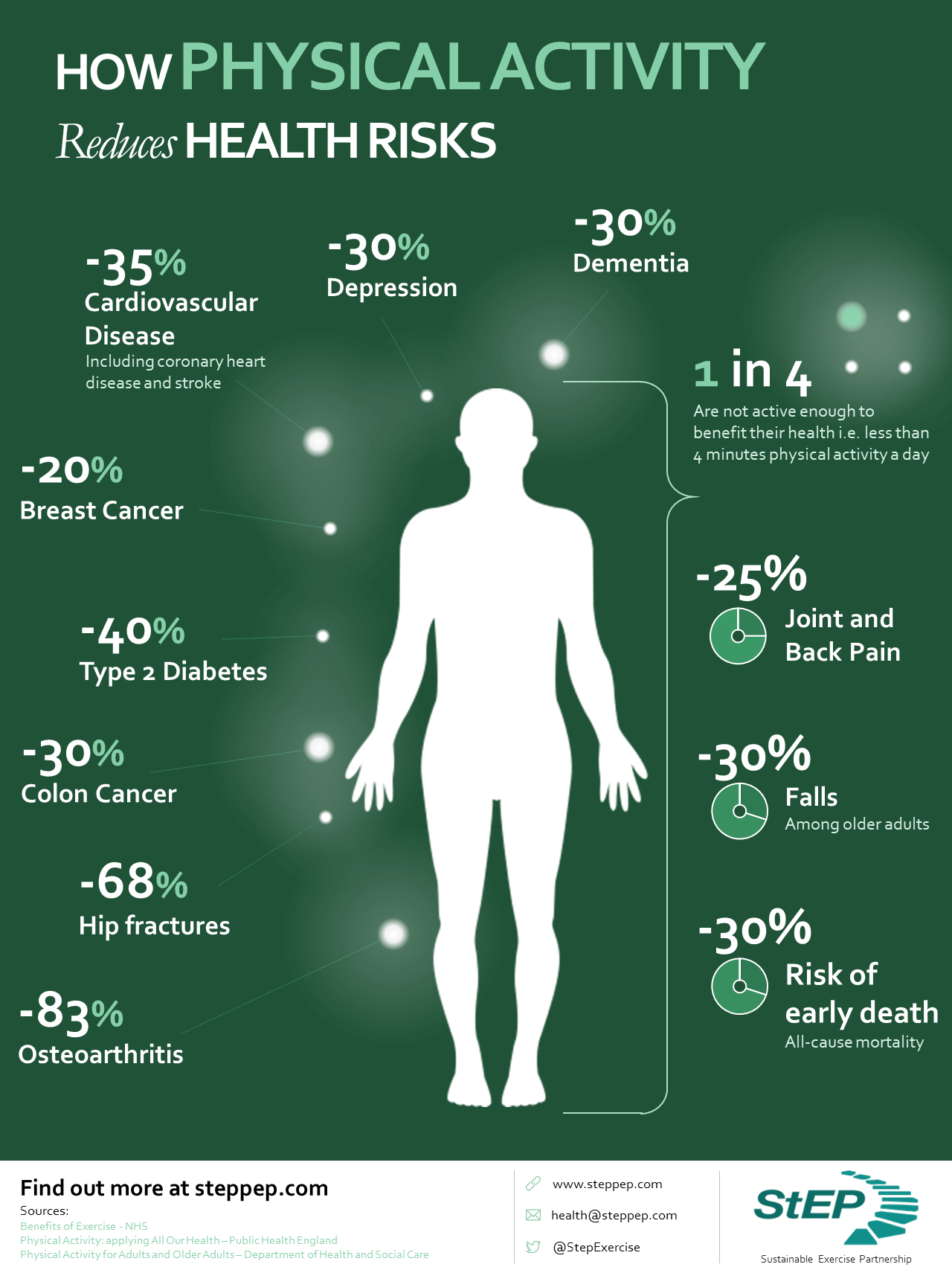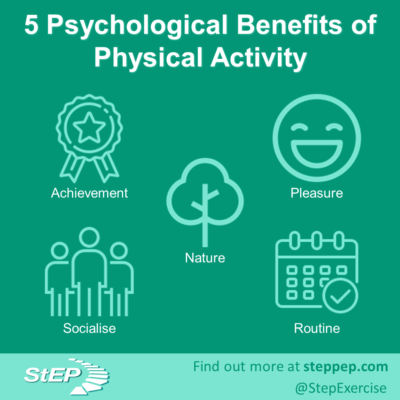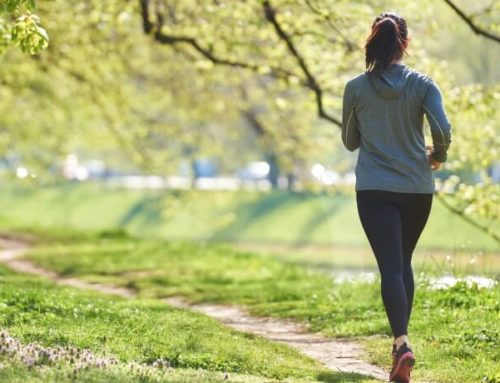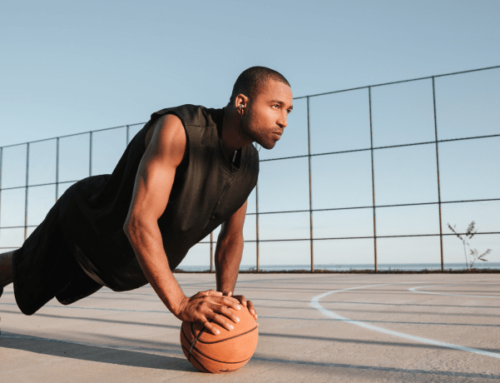Why should you move more?
There are many benefits to physical activity and reduced inactivity.
Physical activity can be active travel, recreation (e.g. dog walking, gym) or sport. Being active can mean as little as moving around/walking on the spot when waiting for something or going for a quick wander to break up long periods of sitting or lying down.
Benefits of Physical Activity
25% of adults in England are physically active for less than 4 minutes a day, which classes them as inactive and so they receive no benefits for the little exercise they do. However, if this quarter increased to 10 minutes of physical activity a day, their life expectancy would increase by 2-3 years.
It’s not always easy to get moving but once you do there are so many great benefits!
Physical Benefits
According to the World Health Organisation, if you are regularly physically active, you will improve muscle, bone and joint strength. Physical activity helps encourage your muscles to absorb amino acids, which aids growth and reduces muscle breakdown. Building up bone density when you are younger can help reduce muscle loss and prevent osteoporosis. High impact exercises, such as running and gymnastics, have been shown to increase bone density. However, if you already have weak or painful joints, non-impact sports, such as swimming and cycling, are recommended. Physical activity is known to reduce pain and improve the quality of life for people who live with chronic pain.
Physical activity is essential in maintaining a healthy weight and is known to reduce your risk of developing a variety of physical health conditions, such as type II diabetes, many types of cancer. Your risk of cardiovascular diseases will also decrease due to improved cardio-respiratory fitness. Memory and other cognitive functions are protected by physical activity through stimulating growth in the hippocampus and improving blood flow to the brain, thus reducing your risk of developing dementia. You are also at a lower risk of falling, due to both improved balance and strength.

Regularly being physically active is known to reduce fatigue and increase your energy levels in people with and without progressive physical illnesses, such as HIV/AIDS, cancer and multiple sclerosis. In fact, physical activity appears to be the most effective treatment for people with chronic fatigue syndrome. Sleep quality is also improved by regular physical activity, recuperative processes in particular, which will also reduce levels of fatigue the following day. 150 minutes of moderate to vigorous physical activity has been shown to improve sleep quality by up to 65%.
Social Benefits
Physical activity can provide structure and purpose, while also reducing loneliness and isolation if done with others. Being active with other people also brings the opportunity to meet new people and work as part of a team, where you can improve your communication skills. You can also increase your respect and awareness of others through acknowledging everyone’s strengths and weaknesses are unique to them.
Your confidence and self-esteem can also be built up through regular physical activity. This can arise from renewed self-confidence in your resilience and physical strengths as well as pride when reviewing how far you’ve come. Building your resilience and dedication through regularity of physical activity can also improve your patience, through noting that your goals cannot be achieved immediately but take sustained personal effort over time.
Engaging with your community, while being active can improve your sense of belonging, while also providing purpose and self-satisfaction. Whether that be interacting with other people in your local area in running groups, exploring some outdoor gyms near you or volunteering at community projects, such as through Goodgym.
Psychological Benefits

Negative emotions can seem out of control sometimes but being active can be a way of understanding and learning how to deal with your frustration and anger, for example. Physical activity is also an efficient way to relieve this stress. In fact, being active reduces symptoms of anxiety as well as raising self awareness of your own thinking and feeling. The brain’s sensitivity to certain hormones, which relieve feelings of depression, increases due to periods of physical activity. It has been found that physical activity can reduce your risk of developing depression as well as being an effective treatment option for depression.
Happiness can be found through being more physically active, not only through the reduction and greater self-awareness of negative emotions. Physical activity simply improves your mood by increasing endorphin production, which increases your positivity. The sense of achievement you feel after exercise and the structure it may provide can enhance your quality of life. It has been found that your mood can improve regardless of the intensity of physical activity. In fact, physical activity is so closely linked to your mood that simply choosing to exercise can benefit you in the short term. You will also feel better due to the energy boost yet also sense of relaxation that physical activity provides.
Reduce Sedentary Time
Physical activity needs to be integrated within your day-to-day activities to optimise the health benefits. You should break up long periods of inactivity with movement even if you are getting the recommended exercise time in.
It may be surprising but physical inactivity contributes to 1 in 6 deaths, which is as many as smoking, and is the 4th largest cause of disease and disability in the UK. 1 in 4 adults are inactive and an even higher proportion sit still for over 6 hours a day, with young adults and older adults spending similar amounts of time sedentary. Even if you are doing the recommended 150 minutes of moderate physical activity each week, you are still harming your health if you do not take regular active breaks, when sitting or lying for extended periods of time.
Why not actively move around when watching TV, reading a book or simply waiting for the kettle to boil?
To find out more about physical activity guidelines, check out our Advice page.






Leave A Comment